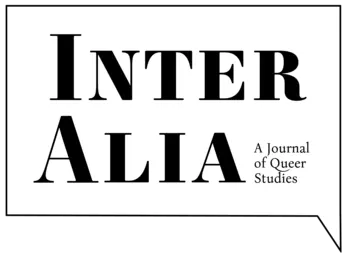https://doi.org/10.51897/interalia/RELI8580
„Układ limfatyczny demokratycznej metropolii”: Seksualność a przestrzeń miejska w Nowym Jorku ery AIDS
Aneta Dybska
Uniwersytet Warszawski
Abstrakt
Artykuł analizuje zmieniający się charakter przestrzeni miejskiej Nowego Jorku w latach 80. I 90. XX w. przez pryzmat lefebvrowskiej idei prawa do miasta. Poświecony jest on zanikaniu kultury seksu publicznego w kontekście działań rewitalizacyjnych miasta. Te zakorzenione w neoliberalnym paradygmacie działania, w połączeniu z wybuchem epidemii AIDS, falą bezdomności i intensyfikacją nastojów homofobicznych, godziły w postulaty sprawiedliwości społecznej wysuwane przez ruch na rzecz emancypacji osób homoseksualnych. Władze miasta stopniowo delegitymizowały nienormatywne formy pożądania, zamykając dostęp do łaźni, nabrzeżnych mol, czy likwidację lokali wokół Times Square oferujących usługi seksualne. Wywłaszczanie osób nieheteronormatywnych i nosicieli HIV szło w parze z zanikaniem miejsc kluczowych dla artykulacji alternatywnych kontrpubliczności, prowadząc do napięć i konfliktów w obrębie lokalnej społeczności. Wprawdzie straty, jakie poniosła kultura publicznego seksu, są nieodwracalne, lecz niedawne oddolne działania młodzieży LGBTQ, odwołującej się do idei prawa do miasta, wpłynęły mobilizująco na członków rozproszonej kontrpubliczności queerowej, a ich działania przełożyły się na korzystne rozstrzygnięcia w sprawie korzystania ze zrewitalizowanych przestrzeni publicznych.
Słowa kluczowe: epidemia AIDS; gentryfikacja; homofobia; bezdomność; prawo do miasta; queerowe kontrpubliczności
„The Lymphatic System of the Democratic Metropolis”: Sexuality and Urban Space in New York of the AIDS Era
Abstract
The processes of recontextualization and reappropriation are said to be the basic ways to neutralize the stigma that is imposed on the sexual minority groups. In light to such processes this article looks at the issue of changing connotations and meanings of the historically strongly conditioned symbol of the pink triangle. By the investigation of different contexts in which the symbol occurs today – commemorative, emancipatory, and connected with pop-culture – the authors undertake the reflection on the consequences related to the attempts to disconnect the pink triangle from the Holocaust symbolism. Additionally, through the usage of the theft metaphor, the authors pay attention to the fact that the limitations of property rights apply not only to material items, but also to symbolic values. On the basis the J. Butler’s performativity concept, A. Croom’s understanding of reappropriation and E. Goffman’s concept of social stigma, the paper analyzes the ways the pink triangle symbol is used in the framework of contemporary discourses created in the USA. The main question concerns the issue of property. To whom does the pink triangle belong? To the ex-prisoners for whom it is stigmatizing, or to LGBT groups, who wear it with pride, or maybe to the users of contemporary culture, who use it as a supplement to different kinds of gadgets?
Keywords: AIDS epidemic; gentrification; homophobia; homelessness; right to the city; queer counterpublics
